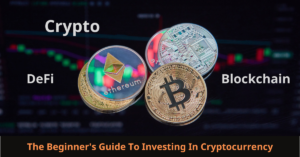Blockchain technology isn’t just a fleeting tech trend; it has transformed the way we perceive digital transactions. But how does this connect to the history of NFTs? Picture blockchain as a digital ledger—a chain of information-packed blocks that is both decentralized and highly secure. Each block holds a record, and once it’s recorded, altering it becomes nearly impossible. This robust security is what initially sparked interest in blockchain technology, laying the groundwork for innovations like NFTs to emerge.
Here is a quick overview of the topics we will cover in this post:
- The Early Days of Blockchain
- The Birth of NFTs: From Concept to Creation
- The 2021 NFT Boom: Breaking into the Mainstream
- Expanding Use Cases of NFTs
- The NFT Market Today and Future Prospects
The Early Days of Blockchain
In its early days, blockchain primarily gained recognition as the backbone of Bitcoin. It was celebrated for introducing a new way to handle digital currencies. However, its potential quickly expanded beyond transferring digital money. The promise of transparency, security, and decentralization meant blockchain could disrupt industries far beyond finance. These foundational principles eventually paved the way for NFTs, representing a new era of digital ownership.
The Birth of NFTs: From Concept to Creation
NFTs, or non-fungible tokens, are unique digital certificates that verify ownership of digital assets. Unlike cryptocurrencies such as Bitcoin, which are identical and interchangeable, each NFT is one-of-a-kind, thanks to blockchain technology.
Key Milestone: The First NFT
- Created by: Kevin McCoy and Anil Dash in 2014
- Named: “Quantum”
- Description: A geometric digital art piece sold on blockchain
This early innovation didn’t cause much buzz initially but marked the beginning of a new era.
What Makes NFTs Unique?
- Ownership and Provenance: Each NFT has a distinct identity and a verifiable ownership history.
- Applications: Digital art, collectibles, music, videos, and more.
- Security: Blockchain ensures that ownership is tamper-proof and transparent.
The 2021 NFT Boom: Breaking into the Mainstream
If there’s a year to remember in NFT history, it’s 2021—a total game-changer. Suddenly, NFTs exploded out of niche internet corners and into the mainstream. So, what gives? A series of jaw-dropping sales and high-profile endorsements turned these digital assets into headline news.
The boom didn’t stop with art and music. The gaming world, a natural fit for NFTs, saw an influx of new possibilities. Gamers began trading digital assets that were unique and verifiable, introducing a new layer of interaction and investment in virtual realms. All these factors together contributed to the seismic shift that was the NFT boom of 2021.
Highlights of the Boom
- Beeple’s “Everydays: The First 5000 Days” sold for over $69 million, turning heads globally.
- Celebrity Involvement: Icons like Snoop Dogg, Grimes, and Lindsay Lohan launched their own NFTs, making them more accessible to the public.
Why the Sudden Popularity?
- The allure of owning unique digital assets.
- Empowering creators by cutting out intermediaries.
- New opportunities for artists, gamers, and content creators to monetize their work.
Gaming Revolution
- NFTs brought unique, tradable in-game items, such as skins and characters, revolutionizing how gamers interact with virtual worlds.
Expanding Use Cases of NFTs
NFTs have moved beyond art and gaming to innovate across various sectors:
Current Use Cases
- Digital Identity: NFTs serve as digital avatars or status symbols.
- Event Ticketing: Unique digital tickets ensure authenticity and security.
- Fractional Ownership: Enables shared ownership of high-value assets.
Future Potential
- Tying NFTs to tangible assets, such as real estate or luxury goods.
- Utility NFTs offering subscriptions or memberships.
The NFT Market Today and Future Prospects
Market Growth
The NFT market has grown into a multi-billion-dollar industry, with platforms like OpenSea and Rarible leading the charge.
Challenges
- Environmental Concerns: Energy consumption in minting NFTs.
- Speculation Risks: Critics view NFTs as a bubble, but underlying potential exists.
Innovations
- Transition to energy-efficient proof-of-stake mechanisms.
- Development of utility NFTs with real-world functions.
Conclusion
NFTs are reshaping how we think about digital ownership, offering endless possibilities across art, gaming, identity, and beyond. While challenges like environmental concerns and speculative risks persist, ongoing innovations hint at a promising future.
What Can You Do?
- Stay Informed: Learn more about NFTs and their applications.
- Explore Opportunities: Whether as a creator or investor, the NFT space offers diverse possibilities.
- Engage Responsibly: Research and understand the environmental and economic implications of NFTs.
As the world continues to navigate the NFT landscape, being proactive and knowledgeable will be key to unlocking their full potential. Start your journey into digital ownership today!












